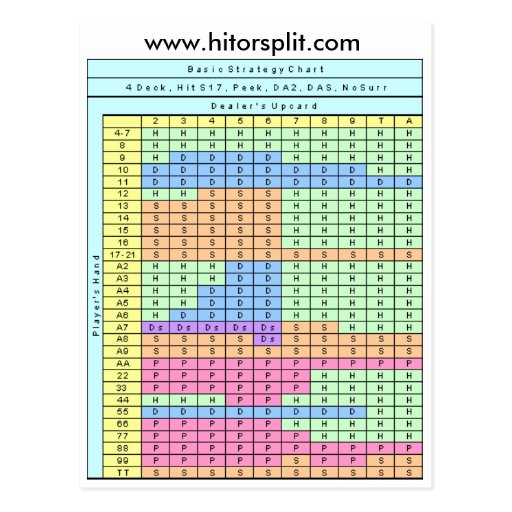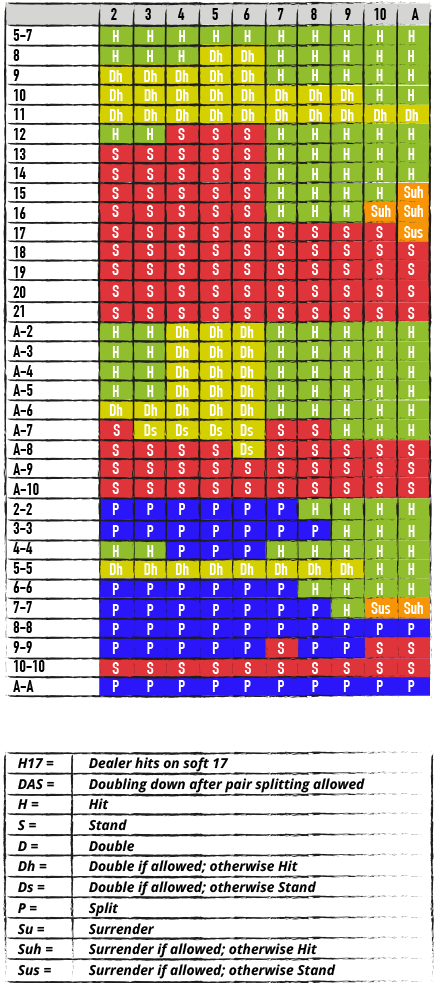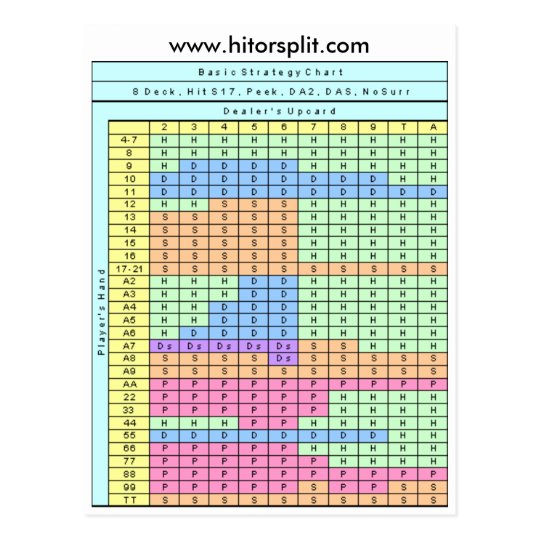Wizard Recommends
Six Deck Blackjack

- €1500 Welcome Bonus
- €100 + 300 Free Spins
- 100% Welcome Bonus
Blackjack in a 6 deck or 8 deck shoe in Vegas typically pays 3:2, but there is a recent and disturbing trend for the big casinos to have blackjack tables that only pay 6:5 on tables with a shoe. The casinos are targeting casual players that are not aware of this difference. Never play any single-deck blackjack game that pays 6-5 (or worse, even money) for a blackjack. The single-deck basic strategy is rule dependent, meaning it’s slightly different depending if the rules are S17 or H17 with DAS or NDAS. You can achieve a very low house edge but.
On This Page
Introduction
To use the basic strategy, look up your hand along the left vertical edge and the dealer's up card along the top. In both cases an A stands for ace. From top to bottom are the hard totals, soft totals, and splittable hands. There are two charts depending on whether the dealer hits or stands on soft 17.
Other basic strategy rules.

Blackjack Strategy 6 Deck Shoe
- Never take insurance or 'even money.'
- If there is no row for splitting (fives and tens), then look up your hand as a hard total (10 or 20).
- If you can't split because of a limit on re-splitting, then look up your hand as a hard total.

Blackjack Strategy 6 Deck Hit Soft 17
Ideally, the basic strategy shows the play which, on average, will result in the greatest win or the least loss per initial hand played. The way I usually go about this is to look at the initial 2-card hands only. Generally, this will result in the overall best play. However, soft 18 against a dealer ace when the dealer stands on soft 17 provides the only known exception that I am aware of for any number of decks. As my blackjack appendix 9 shows, a 2-card soft 18 vs A has an expected value of hitting of -0.100359, and of standing -0.100502. So with two cards it is very slightly better to hit. However, not all soft 18's are composed of two cards. The more the cards in the player's hand the more the odds favor standing. Simulations show that if forced to always hit or always stand, it is better to stand. I would like to thank Don Schlesinger for bringing this unusual play to my attention.